This essay is an abridged version of “The Swastik Court Handbook – Repair & Restoration: Lessons from the Field”, a publication by Art Deco Mumbai Trust. You can order your copy of the handbook here.

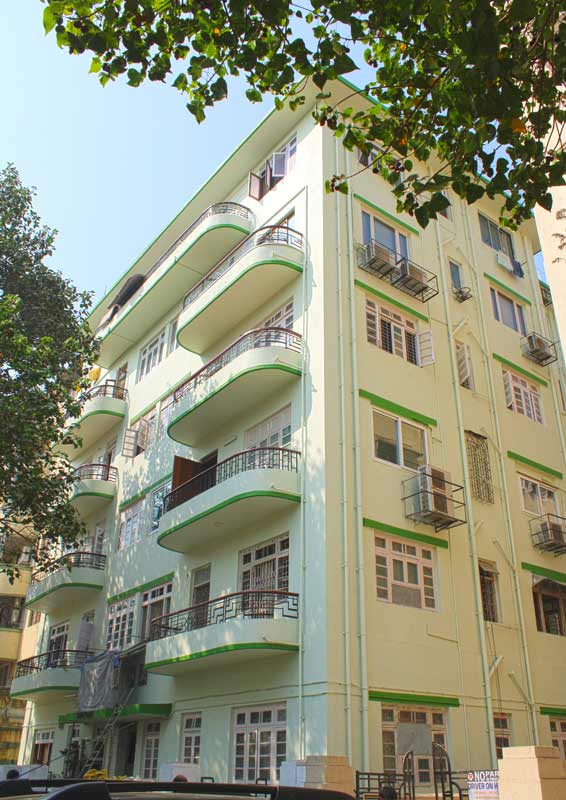
In 2019, residents of Swastik Court came together to implement an elaborate repair and maintenance plan — 83 years after its construction. Recognising the architectural integrity of the building, they invited Art Deco Mumbai to offer its expertise and advise them on safeguarding the aesthetic and cultural significance of the building, through the upgradation project.
“The flats are spacious. It is relatively quiet, it is open, it has got gardens. I think all together, I feel very lucky and very, very blessed.”
– Nayana Kathpalia
Civic Activist and lifelong resident of Swastik Court
‘The Swastik Court Handbook – Repair & Restoration: Lessons from the Field’, a one-of-a-kind resource for 20th-century heritage, chronicles the team’s process, experiences, and observations while repairing and restoring a residential Art Deco building. It is a valuable resource that showcases the possibility of successful outcomes, highlights the nuances associated with rehabilitating a historic property, and presents the benefits a sensitive intervention can offer its stakeholders. It is also a fine example of what can be done with limited financial resources and demonstrates highly cost-effective ways to protect and care for such historic buildings.
Context
In the 19th century, Bombay was a bustling commercial centre and a thriving port for trade relations with various countries worldwide – a gateway into India.[2] This economic boom generated numerous opportunities that attracted people from different communities and walks of life to migrate to the city. By the end of this century, migration also brought to light the need for space and urban infrastructure. The city officials took this need as an opportunity to introduce new architectural styles within the existing city fabric.One such response was the Backbay Reclamation Scheme, conceived to meet a pressing demand for housing in the early 20th century. This reclamation project was unprecedented in scale, opening up vast tracts of land for development on the western edge of the island city. It resulted in the emergence of the city’s first Art Deco precinct – 18 buildings identical in height constructed along the west of Oval Maidan, with Eros Cinema as the only non-residential building on this stretch. [3]
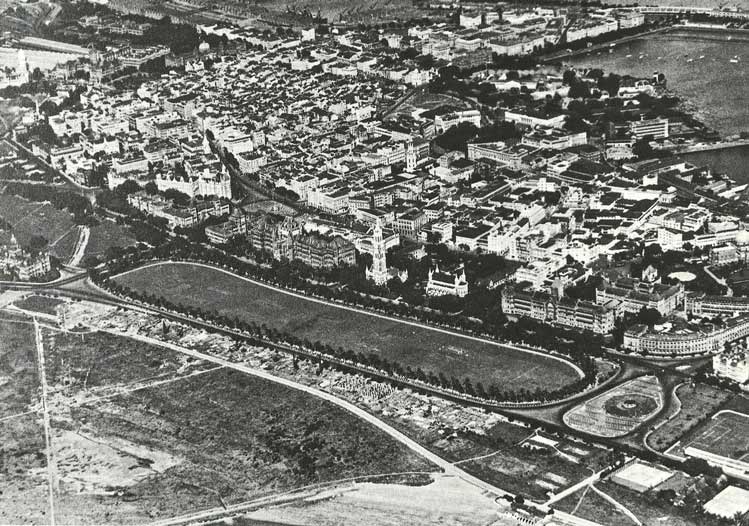
LEGAL PROTECTION | The UNESCO Inscription, Facts & Figures
The UNESCO inscription ensures that all heritage properties identified in the nomination dossier of ‘The Victorian Gothic and Art Deco Ensembles of Mumbai’ enjoy national and international protection as a collective.[5] The overall urban form of the ensemble is protected. The inscription also ensures the maintenance and management of the ensemble is regulated. However, only some individual buildings and smaller districts within the World Heritage Site enjoy site-specific protection.[6] The remaining buildings, especially the Art Deco-style structures, are unprotected, making them vulnerable to misinformed interventions over time.These threats could be structural or visual, especially the loss of character-defining features caused by lack of awareness and access to knowledge partners or skilled contractors, and property mismanagement over time. These challenges make the case study of Swastik Court’s repair and restoration a unique opportunity to closely engage with the structure and understand how citizens and residents can tackle potential threats faced by Art Deco residential buildings, especially within the ensemble.
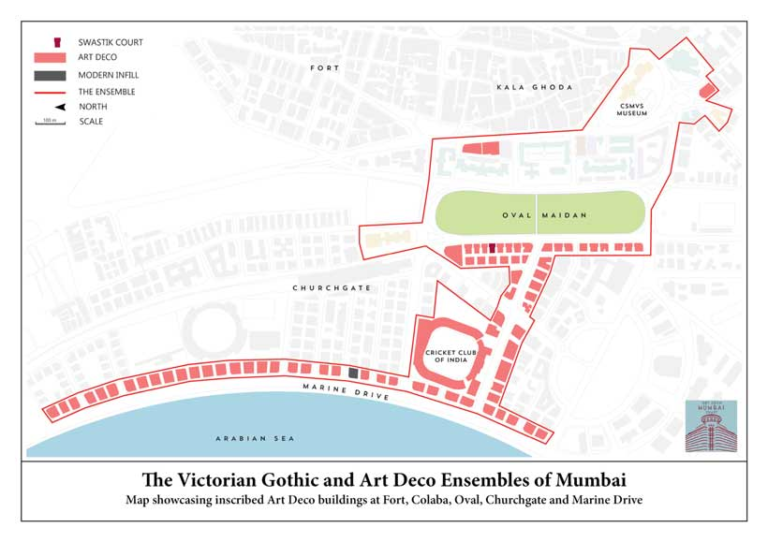
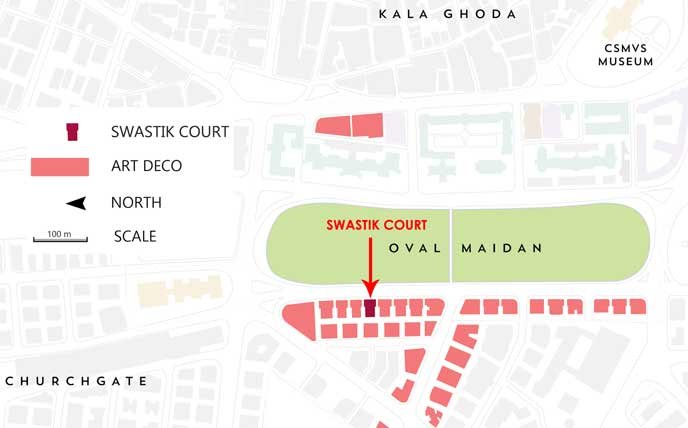
CONSERVATION AND CIVIL SOCIETY | The People of Swastik Court
Constructed in the 1930s, over a span of one and a half years, with a total cost of Rs 1,80,000, Swastik Court is a ground plus five storeys (G+5) multi-owner building, with occupants including landlords, tenants and self-owned flats.[7]
Over many decades, this Art Deco jewel has remained untouched, barring a few coats of paint. This means most building features, inside and out, are original and minimally altered. This has primarily determined its high degree of authenticity and integrity, especially in terms of its material value, compared to other buildings in its surroundings.
To a large extent, the credit for this feat goes to the residents of this historic building, many of whom are original occupants, or family members of original residents, and have close familial ties with the building. Collectively, they are strong advocates for conservation and broadly understand the nuances associated with conservation projects, especially in terms of their role in maintaining the socio-cultural and opportunity values present in their property.
“It was built in the late 1930s, I think 1936, by my grand-uncle Varjivandas Saraiya. He built this building and the one behind it called Lily Court. I believe ‘Swastik’ was because they used to live in a building called Swastik Mansion or Swastik Chambers, somewhere in town [south Mumbai], so when they built this, they decided to call it Swastik Court.”
– Nayana Kathpalia
For this project, the residents of Swastik Court signed a Memorandum of Understanding (MoU) with Art Deco Mumbai, enabling the Conservation Team to conduct preliminary investigations, share their insights, and ensure appropriate conservation of the original design features and building elements. Through a building survey, the Conservation Team also facilitated access to archival resources for material research and identified key design elements inside the building and on its façade.
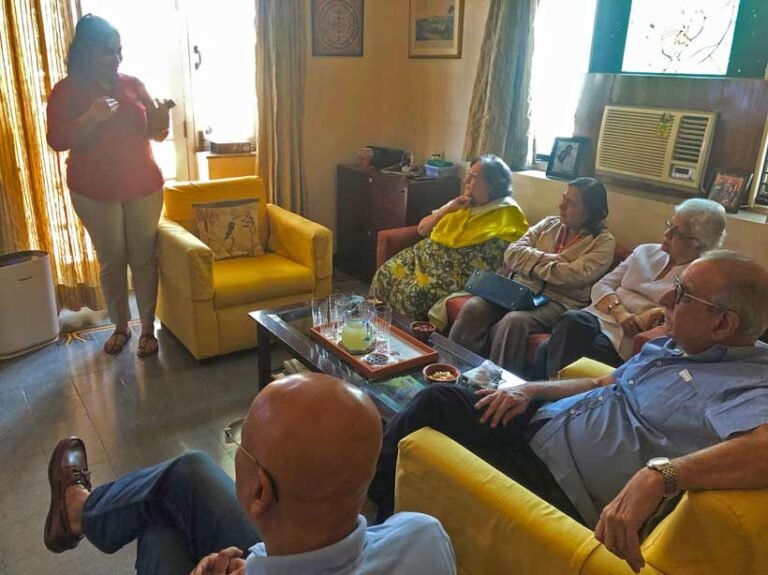
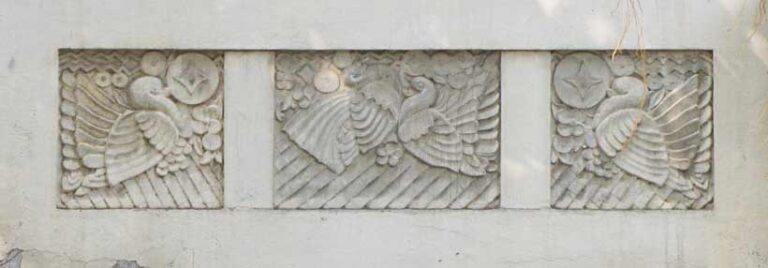
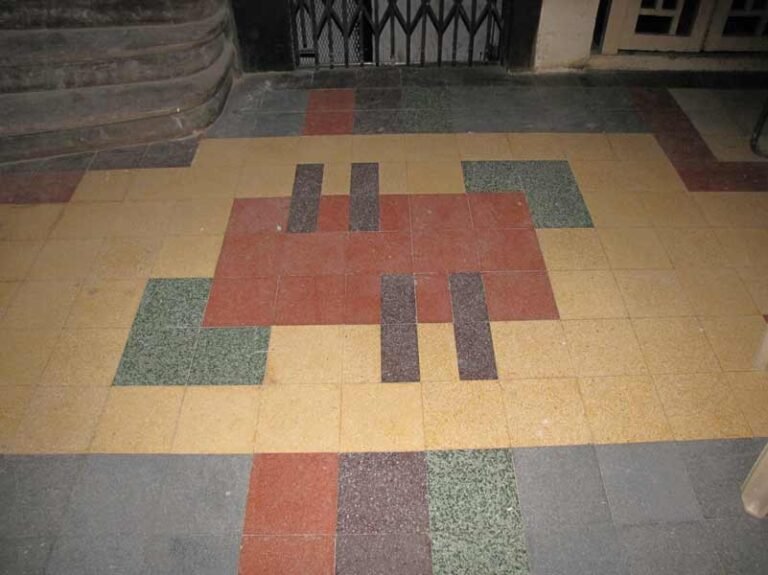
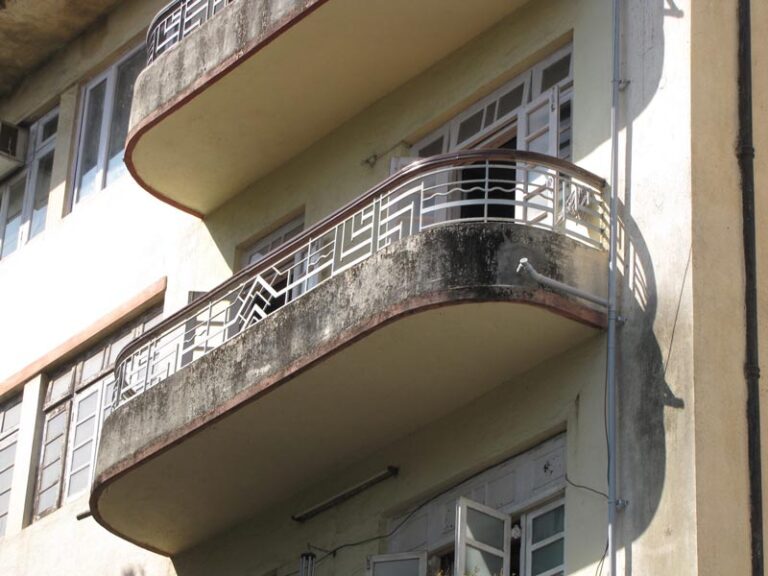
METHODOLOGY | The Approach We Took
The team regularly visited Swastik Court to identify, document and develop an intimate understanding of its different architectural elements and spatial features. This meticulous recording ensured that the conservation recommendations addressed the resident’s upgradation needs while safeguarding the building’s architectural integrity.
The initial building survey confirmed that Swastik Court is a reinforced concrete (RCC) frame structure with masonry walls and a flat terrace roof founded on precast concrete piles. Through the survey, the Conservation Team also catalogued all the character-defining features of this Art Deco building.
This list includes the overall symmetry in its building form, central staircase, original Stigler lift, teak wood windows, eyebrows, curvilinear balconies with metal grilles and wooden handrails, architectural lettering, name boards, lobby finishes, terrazzo flooring, and tropical relief work above the curvilinear entrance canopy. During the project, the team also discovered finer nuances associated with the building’s architectural elements, some of which even the residents were learning of for the first time. These included the original geometric-inspired mosaic flooring on the terrace, stepped profiles on the piers of the compound wall and the original Colourcrete finish of the bas-relief panel above the building entrance. These discoveries improved the team’s spatial and structural understanding of the building and the more extensive Art Deco residential typology. As the next steps, the Conservation Team defined the level of significance, current state, and necessary intervention degree per element.
“In the biggest monuments, the first thing they say is “do as little as possible, and the least you do is the best you can”. I think that is an approach we followed carefully in this project. If we felt we did not need any intervention, we did not do any.”
– Nityaa Lakshmi Iyer
Conservation Architect and Project Head
Furthermore, detailed colour scheme options were prepared in consultation with the building residents. These options were created keeping in mind façade features like balconies, windows, eyebrows (chajjas), decorative relief work, grillwork, motifs, and features at the entrance, such as the canopy, architectural lettering, entrance gates and compound wall. A Maharashtra Housing and Area Development Authority (MHADA)-appointed contractor carried out the project. Through a guidance note that ensured all the repair work was executed in an informed manner, the team also advised and sensitised this contractor about the character-defining features that make Swastik Court unique.
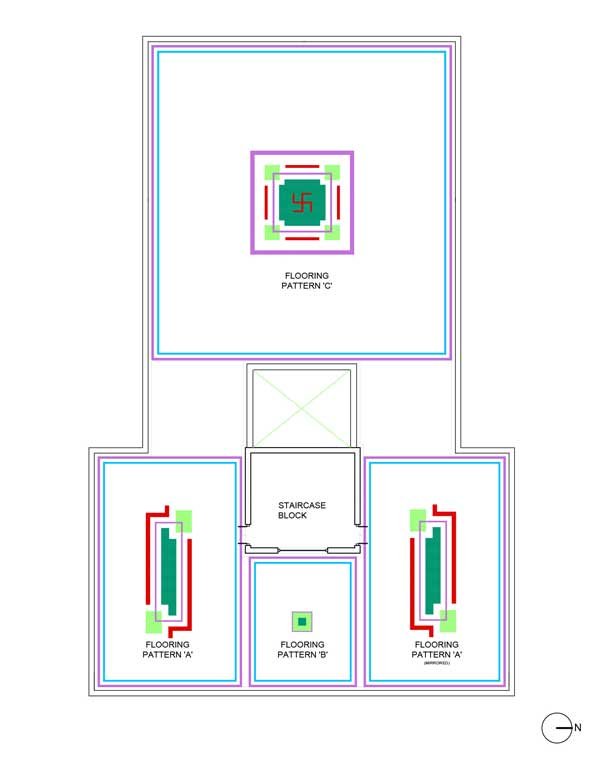
To make certain the building’s values were preserved over time, only reversible conservation treatments and interventions were recommended and implemented. In instances where there was a need for more information due to a lack of archival data or if no evidence could be gathered during site investigation or through oral histories, much care was taken to understand the material on-site and document its condition, followed by recommendations for interventions that were the least invasive and highly reversible.
As part of its capacity-building efforts, the team actively engaged with the stakeholders throughout the project, educating them about the character-defining features and drawing their attention to the significant features of the building, hidden in plain sight.
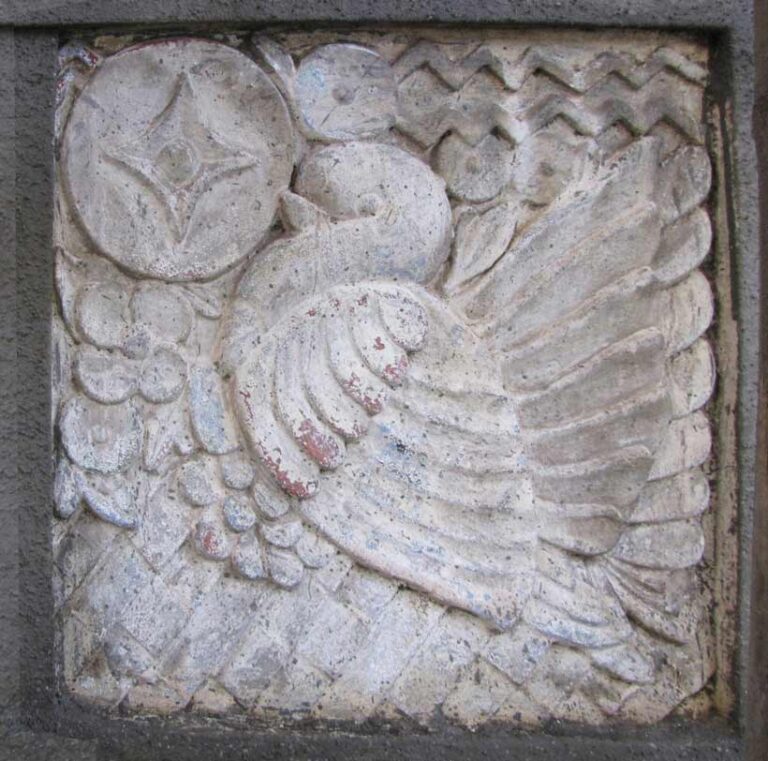
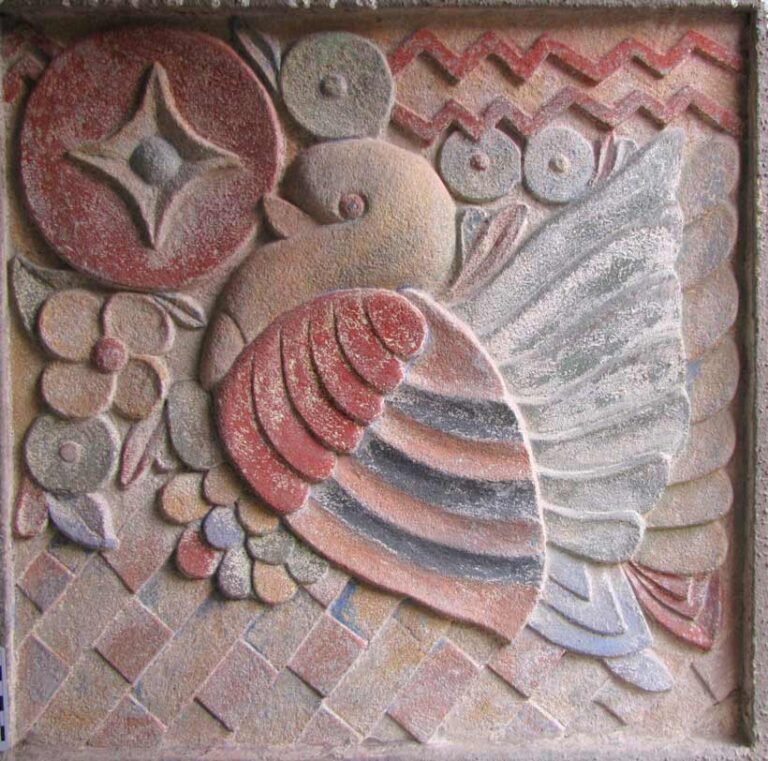

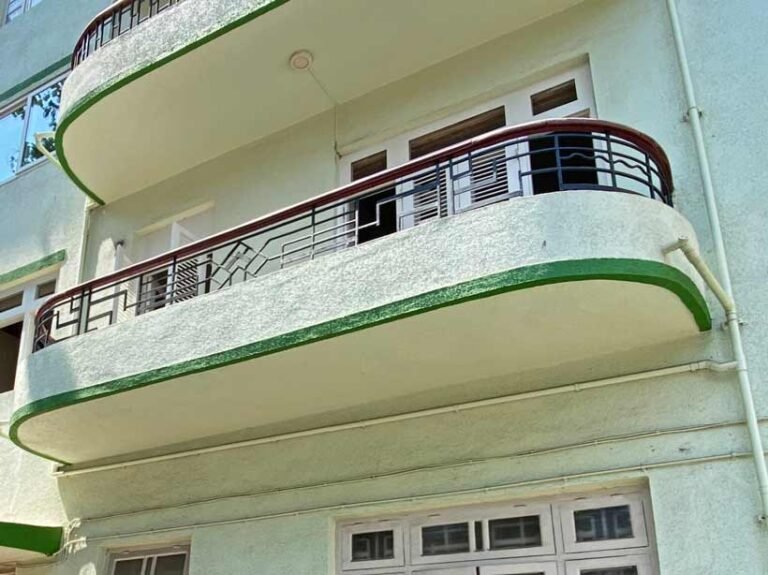
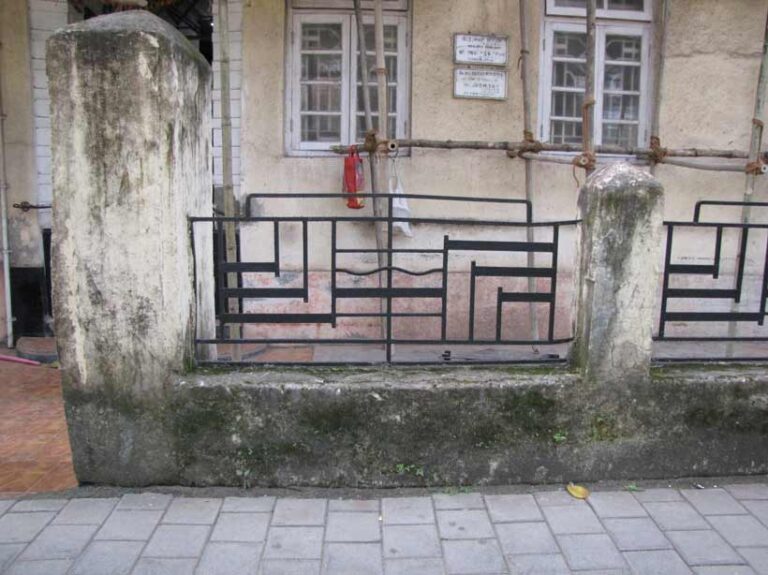
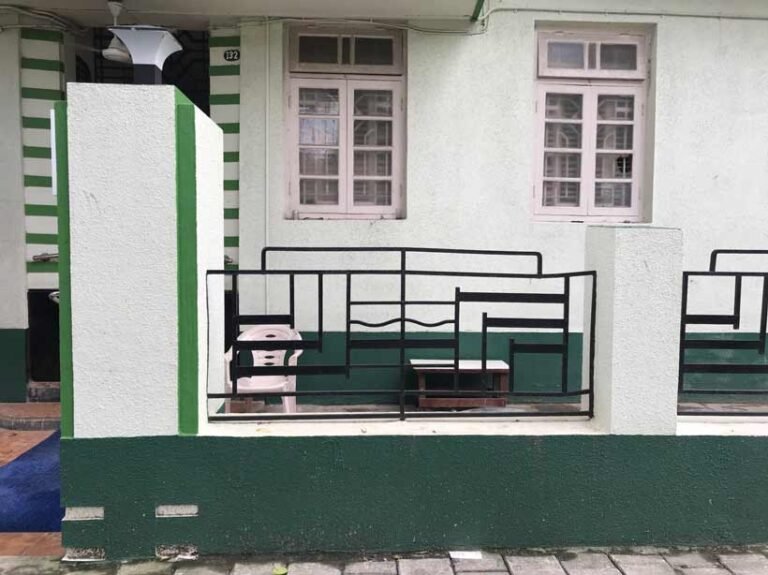
CHALLENGES | When We Hit a (Concrete) Wall
Some aspects of the project also highlighted the urgent need to conduct historical and scientific research on building materials and systems that form a significant feature of Mumbai’s Art Deco residences, the Colourcrete surface finish being a noteworthy example.
The project’s research phase also highlighted the need for more technical documents in the public domain that could help stakeholders and professionals repair and restore character-defining features of 20th-century buildings. These include colourcrete relief work, terrazzo tiles, mosaic flooring, and many more such elements.
In addition, it was also challenging to find any continuously inhabited residential building in India which had been conserved recently, and which could serve as a precedent for this project. The Conservation Team, therefore, relied on prolonged conversations with the residents, in addition to the team’s deliberations and investigations, to make well-rounded recommendations that would benefit Swastik Court in the long run, without compromising the integrity of its architecture.
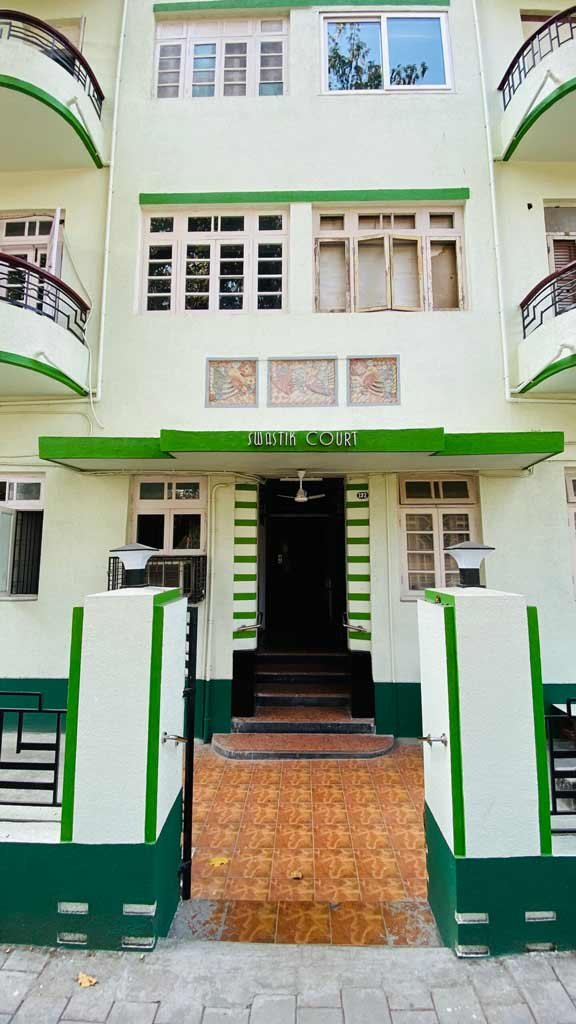
IN CONCLUSION | Lessons from the Field
This project helped Art Deco Mumbai identify and implement a methodology that facilitates residents of Art Deco buildings to improve their properties in a manner that respects the building’s past, while making way for change in the future. Through this project publication, Art Deco Mumbai also seeks to fulfil the compelling need to disseminate resources that would aid in the conservation, repair, and restoration of 20th-century heritage, especially the ones that use RCC (Reinforced Concrete Cement) as the primary building material. The Trust believes that the availability of this information in the public domain and the ‘lessons from the field’ in the handbook will serve as a shared resource for architects, conservationists, building occupants, contractors, designers, and students alike, to maintain, restore, and preserve modern living heritage. It also hopes the success of this project encourages others to reflect on the conservation of Mumbai’s 20th-century residential heritage and explore the possibility of adding value to heritage properties by implementing sensitive but cost-effective interventions.
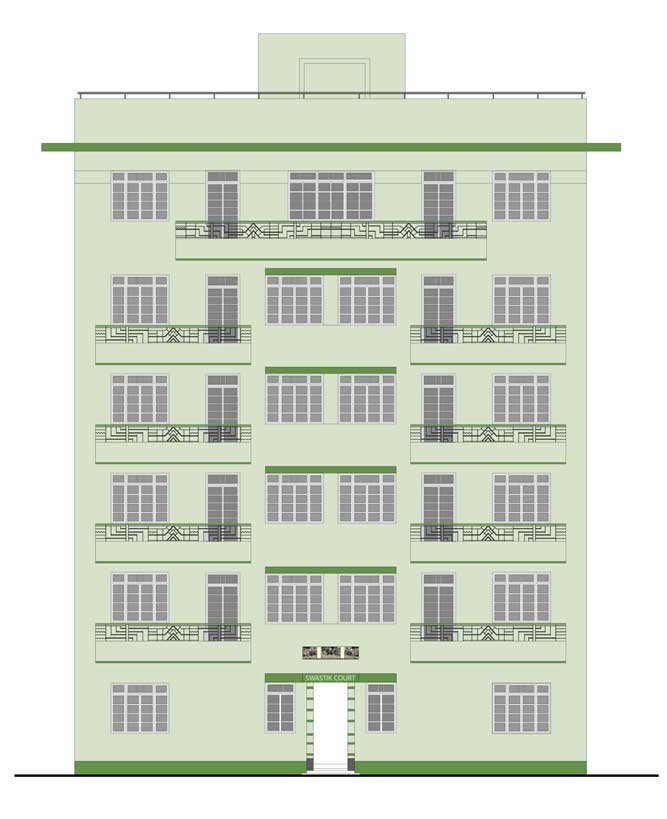
Presenting the voices of the diverse stakeholders in this unique project – watch the full video below.
Here’s what people are saying about The Swastik Court Handbook:
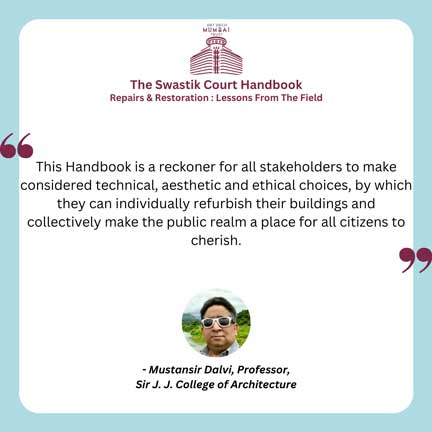
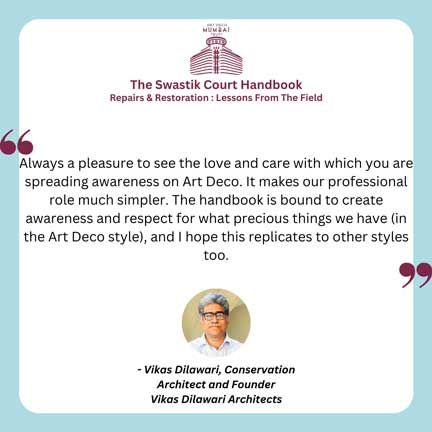
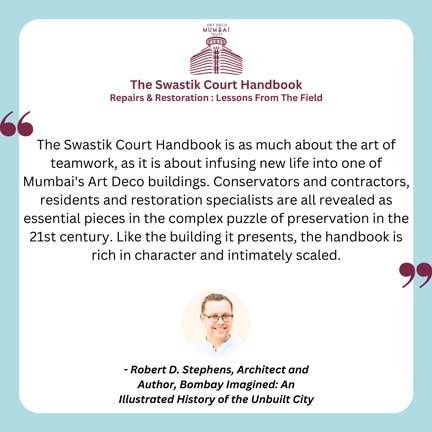
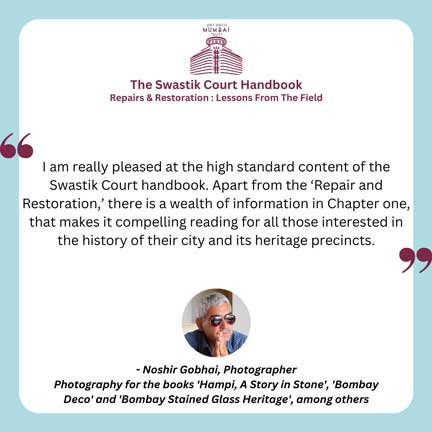
Get a copy of The Swastik Court Handbook to learn how to repair your building in a sensitive, cost-effective and pragmatic manner, without compromising its architectural integrity. The handbook provides detailed insights on how the team restored a bas-relief constructed more than 80 years ago, discovered new information about old building materials like Colourcrete, and presented hitherto forgotten details about the building to its residents. Order your copy here.
Nityaa Lakshmi Iyer for Art Deco Mumbai
Nityaa is a conservation architect with a keen interest in 20th-century architecture. She has an MSc in Historic Preservation from the University of Pennsylvania and is an alumnus of the Getty Graduate Internship Program. She believes community-driven initiatives add high value to heritage conservation projects. She has worked on conservation, outreach, and capacity-building projects with numerous non-profit organisations, such as the Center for Architectural Conservation, Art Deco Mumbai Trust and World Monuments Fund. She is also an EP representative of the ICOMOS International Scientific Committee for Twentieth Century Heritage and the Asia-Pacific Regional Co-coordinator for the ICOMOS Emerging Professional Working Group. She led the project team working on repairing and restoring Swastik Court.
In April 2023, Atul Kumar, Founder Trustee, Art Deco Mumbai, presented lessons from “The Swastik Court Repair & Restoration Project” at the 16th World Congress on Art Deco, Miami Beach, USA.

